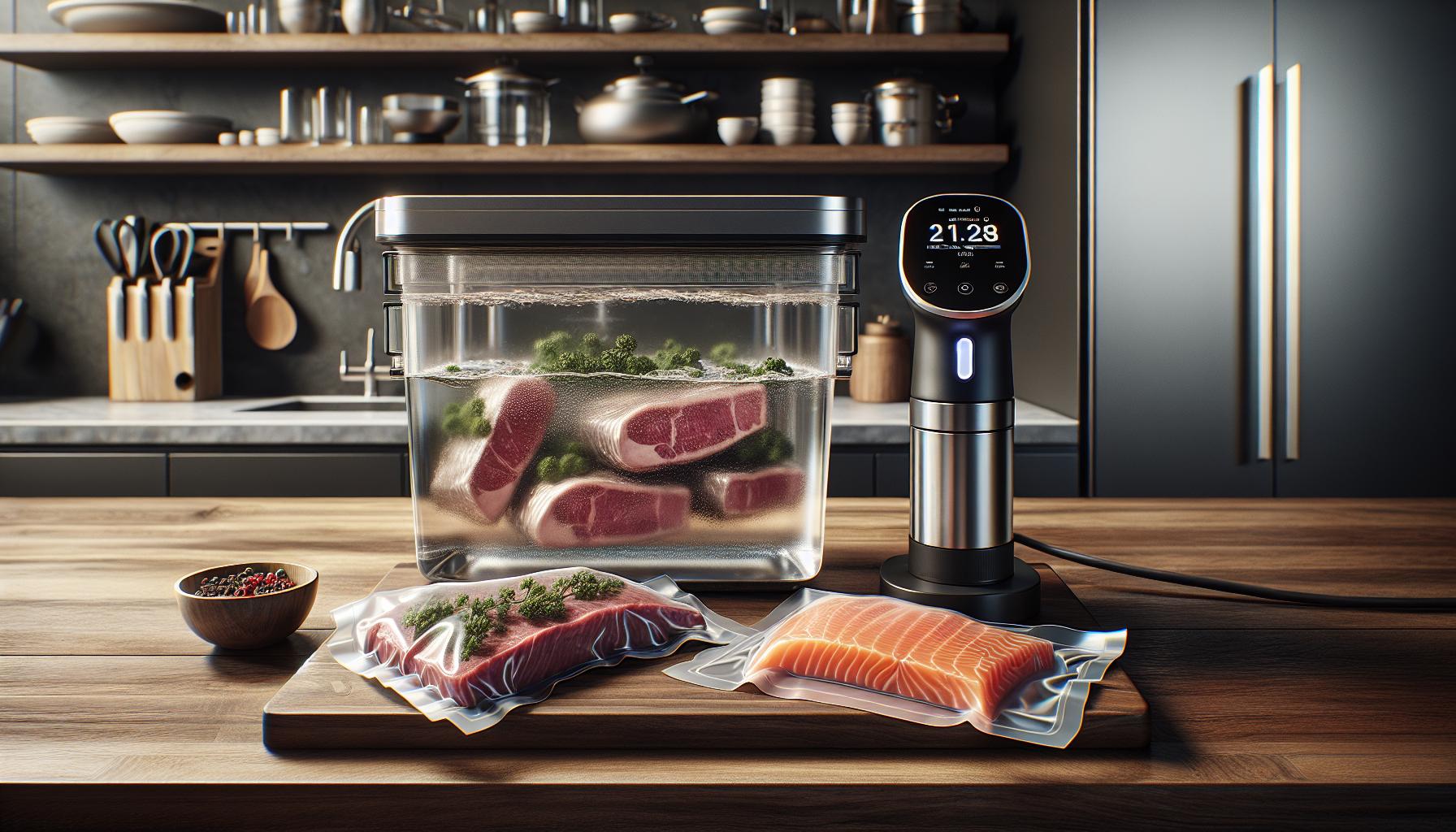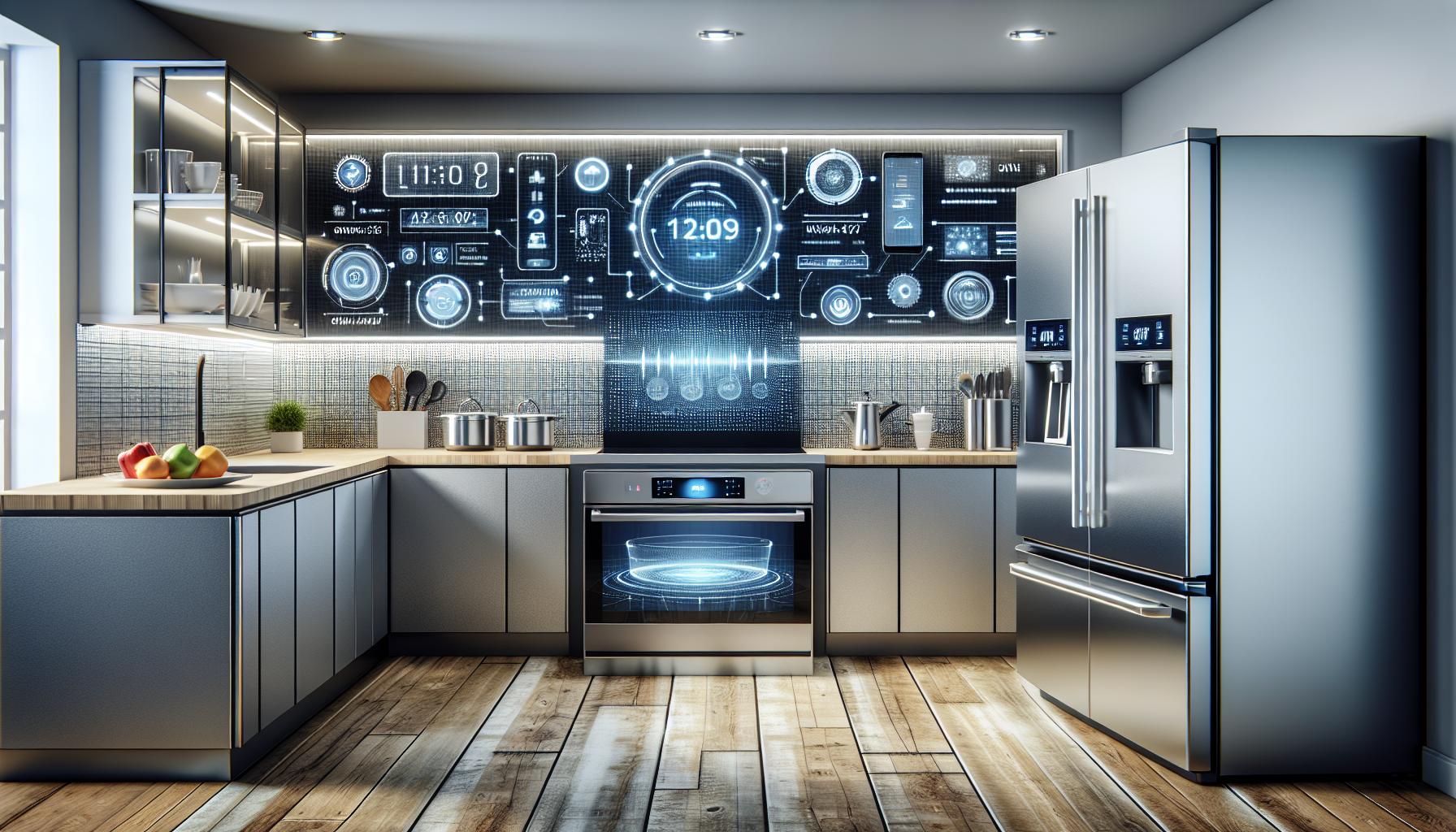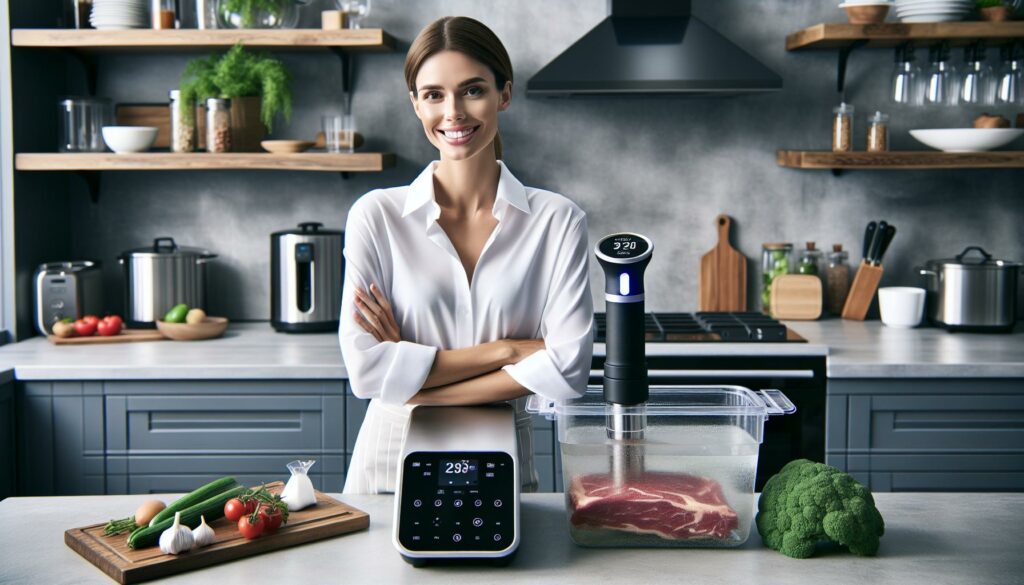Modern cooking has evolved far beyond the basic boil-and-bake methods our grandparents relied on. Today’s kitchen wizards leverage cutting-edge techniques like sous vide molecular gastronomy and air frying to create culinary masterpieces that would make traditional chefs’ heads spin.
From precision temperature control to scientific food transformation these innovative methods aren’t just fancy restaurant tricks anymore. Home cooks are discovering that modern techniques can transform ordinary ingredients into extraordinary dishes while saving time and enhancing flavors. Whether it’s creating perfectly cooked steaks with immersion circulators or turning fruit juices into flavorful pearls these contemporary approaches are revolutionizing how people cook and experience food.
Modern Cooking Techniques
Cooking technology transformed significantly during the past three decades, introducing precision-based appliances that revolutionized food preparation. Digital thermometers measuring temperatures within 0.1°F accuracy replaced traditional meat thermometers in 1990. Smart ovens with programmed settings emerged in 2010, enabling consistent results across multiple cooking cycles.
| Timeline | Innovation | Impact |
|---|---|---|
| 1990s | Digital Thermometers | ±0.1°F accuracy |
| 2000s | Induction Cooking | 90% energy efficiency |
| 2010s | Smart Ovens | Precise temperature control |
| 2020s | AI-powered Appliances | Automated cooking processes |
Modern cooking techniques incorporate three fundamental changes:
- Temperature Control
- Sous vide circulators maintaining exact water temperatures
- Infrared sensors monitoring surface temperatures
- Digital probe thermometers tracking internal cooking progress
- Time Management
- Programmable pressure cookers reducing cooking duration by 70%
- Multi-zone ovens enabling simultaneous cooking of different items
- Timer-integrated appliances preventing overcooking
- Energy Efficiency
- Induction cooktops transferring 90% of energy directly to cookware
- Convection systems reducing cooking time by 25%
- Steam ovens preserving nutrients while minimizing power consumption
Technological integration elevated home cooking through:
- Mobile apps connecting to cooking devices
- Cloud-based recipe databases adjusting to specific appliances
- Real-time temperature monitoring via wireless sensors
- Automated cooking sequences based on ingredient weight
- Combination steam-convection ovens
- Thermal circulators for precise temperature control
- Vacuum sealers for sous vide preparation
- Anti-griddles for flash-freezing components
Sous Vide: Precision Temperature Control

Sous vide transforms proteins with precise temperature control through water immersion cooking. This technique creates perfectly cooked food by maintaining exact temperatures for extended periods.
Essential Equipment for Sous Vide
A sous vide setup requires three primary components:
- Immersion Circulator
- Maintains water temperature within 0.1°F accuracy
- Features digital controls for time temperature settings
- Connects to smartphones for remote monitoring
- Container or Pot
- Clear polycarbonate containers offer optimal visibility
- 12-quart capacity accommodates most cooking needs
- Heat-resistant design prevents warping
- Vacuum Sealer System
- Creates airtight packaging for food items
- Removes oxygen to prevent oxidation
- Includes BPA-free bags rated for high temperatures
- Meats
- Ribeye steaks (129°F for medium-rare)
- Chicken breasts (145°F for perfect doneness)
- Pork tenderloin (140°F for juicy results)
- Seafood
- Salmon fillets (122°F for silky texture)
- Lobster tails (140°F for tender meat)
- Scallops (123°F for optimal consistency)
- Eggs
- Soft poached (147°F for 45 minutes)
- Custard style (167°F for 20 minutes)
- Perfect yolks (144°F for 1 hour)
| Food Type | Temperature (°F) | Cook Time |
|---|---|---|
| Steak | 129 | 1-2 hours |
| Chicken | 145 | 2 hours |
| Salmon | 122 | 45 min |
| Eggs | 147 | 45 min |
Molecular Gastronomy in Home Kitchens

Molecular gastronomy transforms everyday ingredients into innovative dishes through scientific principles. This modern cooking approach combines chemistry with culinary arts to create unique textures flavors in home kitchens.
Common Techniques and Ingredients
Molecular gastronomy relies on specialized ingredients that alter food textures. Sodium alginate creates spherification, turning liquids into caviar-like pearls. Agar agar, derived from seaweed, forms gels at room temperature. Liquid nitrogen flash-freezes ingredients at -196°C, creating frozen mousses desserts. Essential tools include:
- Digital scales measuring 0.1-gram increments
- Silicon molds for shaping gels spheres
- pH meters ensuring proper chemical reactions
- Immersion blenders creating stable foams emulsions
Common applications include:
- Converting olive oil into powder
- Making fruit juice caviar
- Creating chocolate foam
- Developing edible films
Creative Plating and Presentation
Modern plating techniques showcase molecular gastronomy’s visual appeal. Chefs use specific tools to enhance presentation:
- Precision tweezers placing micro herbs
- Squeeze bottles creating sauce dots lines
- Ring molds forming perfect circles
- Slate plates providing contrast
Key plating elements include:
- Negative space utilizing 30% of the plate
- Color combinations following 60-30-10 rule
- Texture variations incorporating 3-4 elements
- Height building using 3 vertical layers
- Hot elements paired with frozen foams
- Smoking ingredients under glass domes
- Flash-frozen garnishes on warm plates
- Room temperature gels with chilled spheres
Smart Kitchen Technology and Connected Appliances

Modern kitchens integrate sophisticated digital systems that transform cooking into a precise, data-driven experience. Connected appliances communicate with smartphones through IoT technology, offering remote monitoring capabilities.
AI-Powered Cooking Systems
AI-powered ovens analyze food using built-in cameras to identify ingredients and automatically adjust cooking parameters. These systems integrate with voice assistants like Alexa and Google Home, enabling hands-free operation during meal preparation. Smart refrigerators track inventory levels through internal cameras and RFID sensors, generating automated shopping lists when supplies run low. Advanced features include:
- Recipe recommendation algorithms based on available ingredients
- Real-time temperature adjustments using machine learning
- Automated cooking programs for consistent results
- Energy consumption optimization through usage pattern analysis
- Remote troubleshooting and maintenance alerts
Smart Thermometers and Timers
Digital thermometers with Bluetooth connectivity transmit real-time temperature data to mobile devices. These smart probes monitor multiple food items simultaneously, sending alerts when target temperatures are reached. Advanced timer systems integrate with recipe apps to:
- Track multiple cooking stages automatically
- Send notifications for required actions
- Store cooking data for future reference
- Monitor doneness levels across different proteins
- Calculate precise resting times for meats
Connected thermometers feature preset temperature guides for various foods, eliminating guesswork from cooking processes. Multi-zone monitoring capabilities allow users to track different dishes cooking at varying temperatures, ensuring perfect timing for complete meals.
Sustainable Cooking Methods
Modern sustainable cooking methods prioritize environmental responsibility while maintaining culinary excellence. These practices integrate energy efficiency with waste reduction techniques to create an eco-conscious kitchen environment.
Energy-Efficient Appliances
Energy-efficient kitchen appliances reduce power consumption by 30-50% compared to traditional models. Induction cooktops transfer 90% of electromagnetic energy directly to cookware, minimizing heat loss. Modern convection ovens circulate heat evenly, cutting cooking times by 25% while using 20% less energy than conventional ovens.
| Appliance Type | Energy Savings | Time Reduction |
|---|---|---|
| Induction Cooktop | 90% efficiency | 50% faster |
| Convection Oven | 20% less energy | 25% faster |
| Smart Refrigerator | 40% reduction | N/A |
Zero-Waste Cooking Techniques
Zero-waste cooking transforms kitchen scraps into valuable ingredients. Root-to-stem cooking utilizes entire vegetables: carrot tops become pesto, broccoli stems transform into slaw, potato peels crisp into chips. Preservation methods extend ingredient life through fermentation, dehydration, or pickling. Kitchen scraps create nutrient-rich compost or flavor-packed broths.
| Food Part | Usage Example |
|---|---|
| Vegetable Stems | Stir-fries, soups |
| Fruit Peels | Zest, tea, candied |
| Herb Stems | Stocks, oils |
| Stale Bread | Crumbs, croutons |
Health-Focused Cooking Innovations
Modern cooking techniques prioritize nutritional value while maintaining flavor profiles. These methods combine advanced technology with health-conscious approaches to create balanced meals.
Air Frying and Steam Cooking
Air fryers transform traditional fried foods into healthier alternatives by circulating hot air at 400°F around food items using 75% less oil. The rapid air circulation creates a crispy exterior on foods like chicken wings, french fries or vegetables in 10-20 minutes. Steam cooking preserves nutrients by heating food through water vapor at temperatures between 212-250°F. Advanced steam ovens offer precise humidity control through multiple settings: 100% steam for vegetables, 50% for fish or 30% for bread. The combination of steam and convection produces tender interiors with golden-brown exteriors on proteins like salmon or chicken breast.
Nutrient Preservation Methods
Advanced vacuum sealing retains 90% of vitamins in vegetables compared to traditional cooking methods. Pressure cooking locks in nutrients by reducing cooking time up to 70% while maintaining food’s cellular structure. Flash freezing preserves nutritional content by rapidly dropping temperatures to -30°F in under 30 minutes. Modern slow cookers feature programmable temperature ranges between 165-200°F to protect heat-sensitive nutrients like vitamin C B vitamins. Electromagnetic induction heats food directly preserving up to 95% of minerals vitamins through reduced cooking times shorter heat exposure. Glass ceramic cookware prevents nutrient leaching commonly associated with reactive metal surfaces.
Innovation and Culinary Excellence
Modern cooking techniques have revolutionized the culinary landscape by seamlessly blending technology precision and creativity. From sous vide to molecular gastronomy these innovations empower home cooks to achieve restaurant-quality results while maintaining nutritional value and sustainability.
The future of cooking lies in smart connected kitchens where AI-powered appliances and sustainable practices work together to create exceptional dining experiences. As these technologies become more accessible everyday cooks can explore new culinary horizons while preserving both flavor and environmental responsibility.
The marriage of science and gastronomy continues to push boundaries making the kitchen an exciting space for innovation and culinary excellence.

